Harajuku is a city that attracts many tourists as a place of fashion and pop culture. It is also a city developed on a valley where the branch of Shibuya river flowed. Harajuku station is built on gentle slopes between Omotesando and Takeshita-dori that makes Omotesando exit is on higher ground and the Takeshita exit is on lower ground of the platform. The Yamanote line, which passes through the natural topography, has been made to cross several rivers. The river at the bottom of Harajuku Station, flows from Kiyomasa no Ido, a spring inside the Meiji Shrine, and passes along Takeshita street. However, today it is a culvert bordering the Yamanote line. Along with urbanization, the rivers in towns have been the subject to flood control by engineering technology. While it makes life safer, in the same time it insulates people from the natural changes that take place.Question arise on how the station will look like when taking the future of station as a land- mark and bring up the local potential for tourism together with uniqueness of Harajuku’s to- pography and rivers. The width of Takeshita exit tunnel was expanded with a sloped masonry wall and connected to the Meiji Shrine. Slits were made on the sides of the platform to let natural light into the space. Raise the river that had been covered. The small river catches the rain water from the platform roof. The murmur of the flowing river and the changes of water level will tell people about the natural topology of Shibuya station.
Harajuku / A River Flowing Station
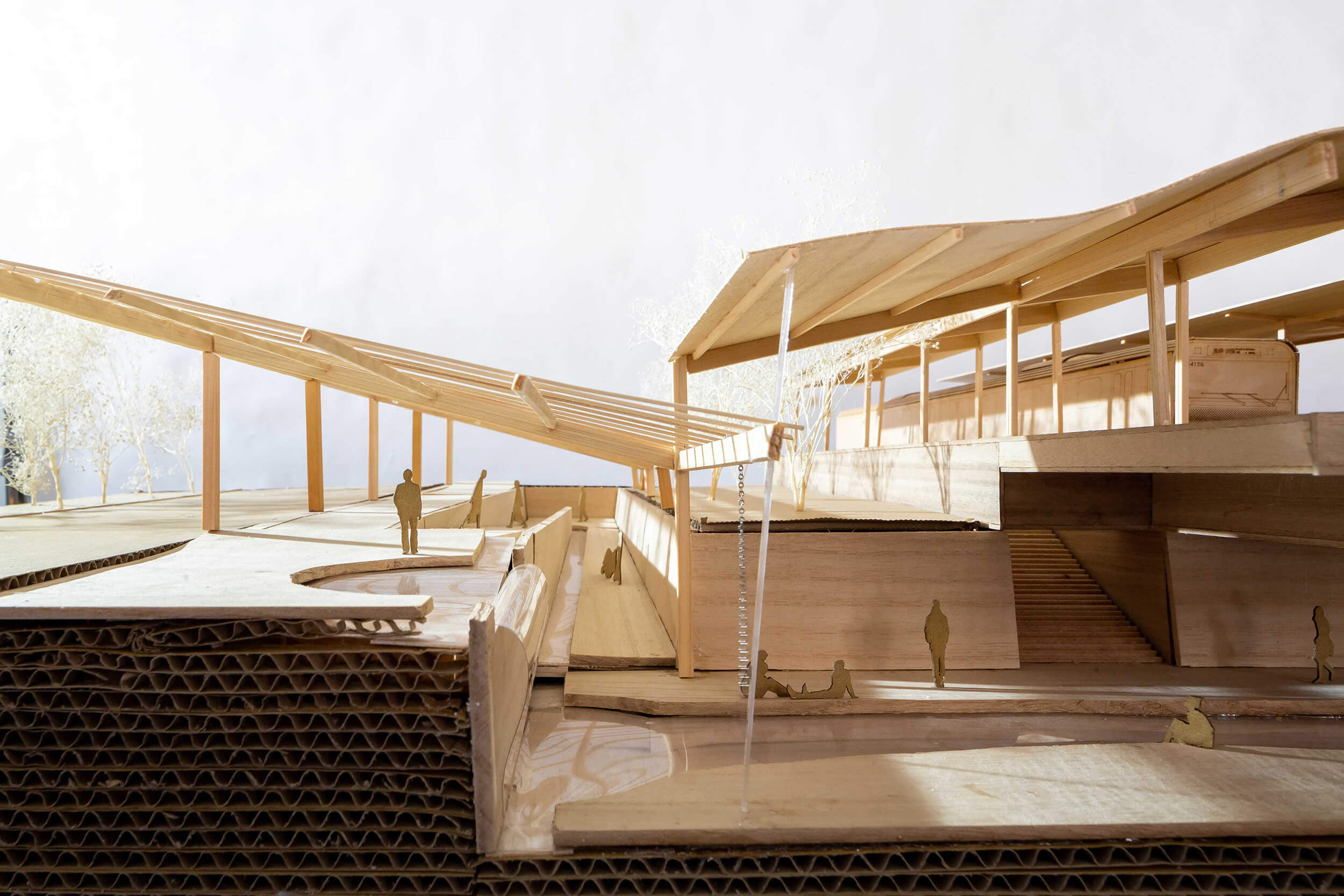
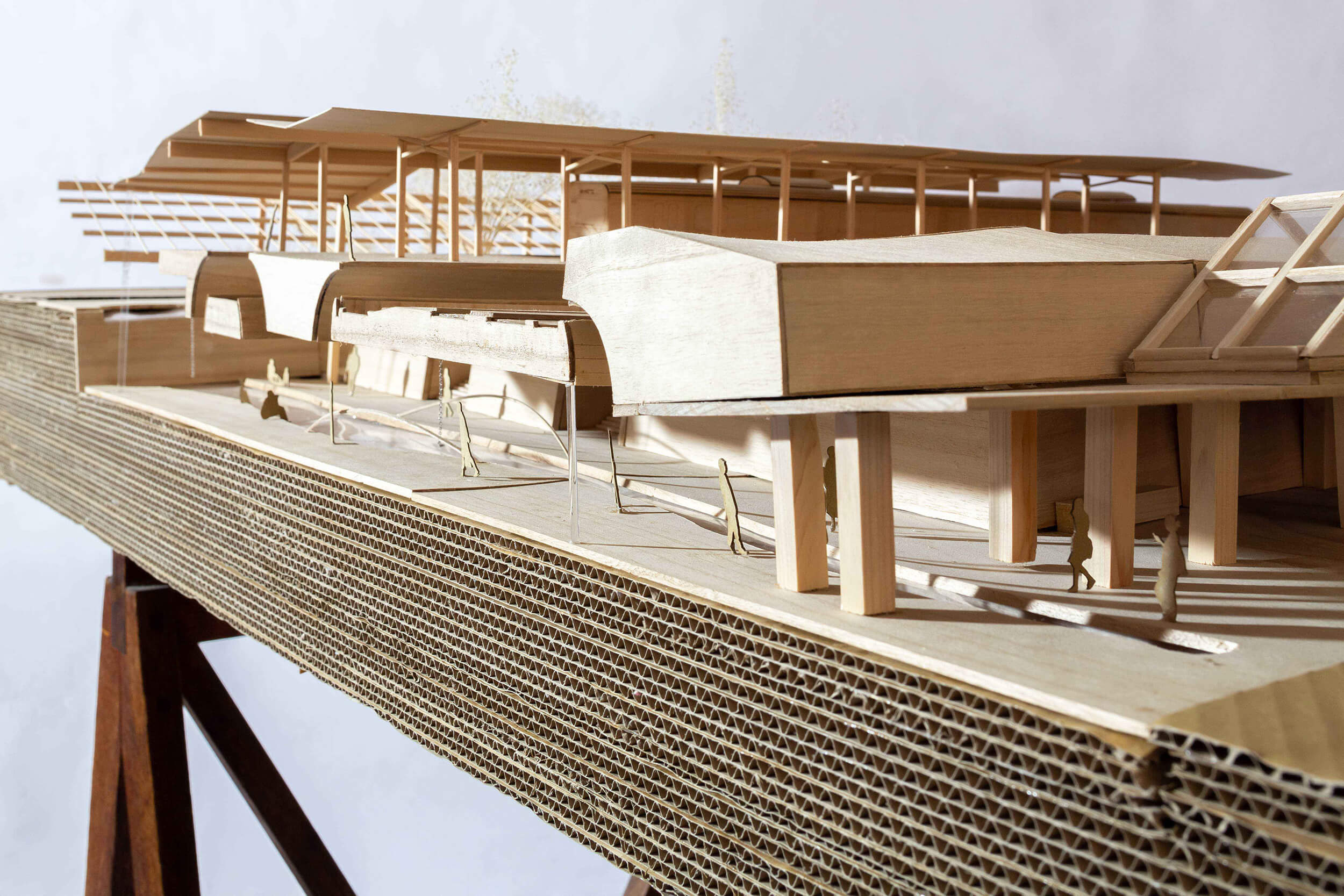
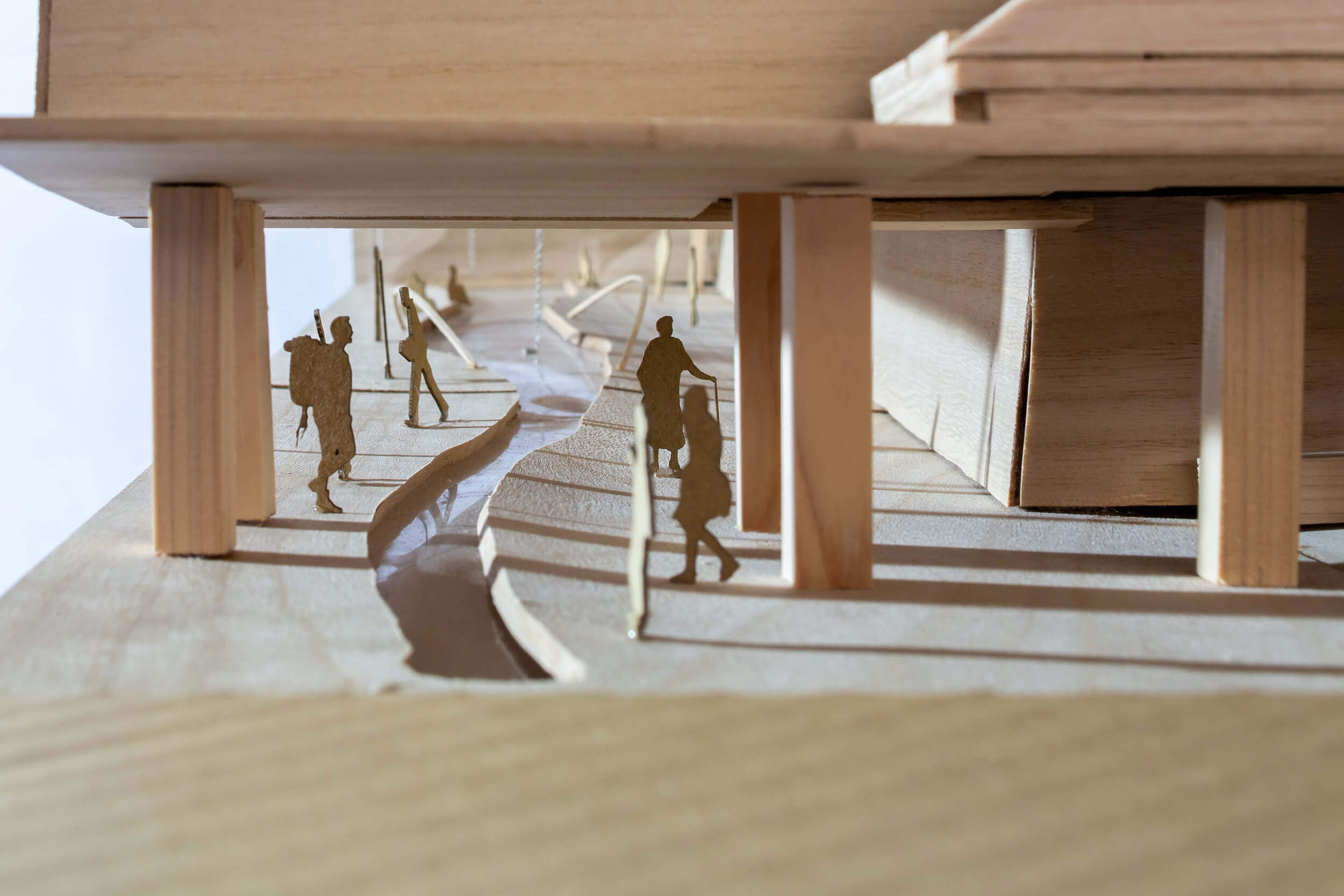
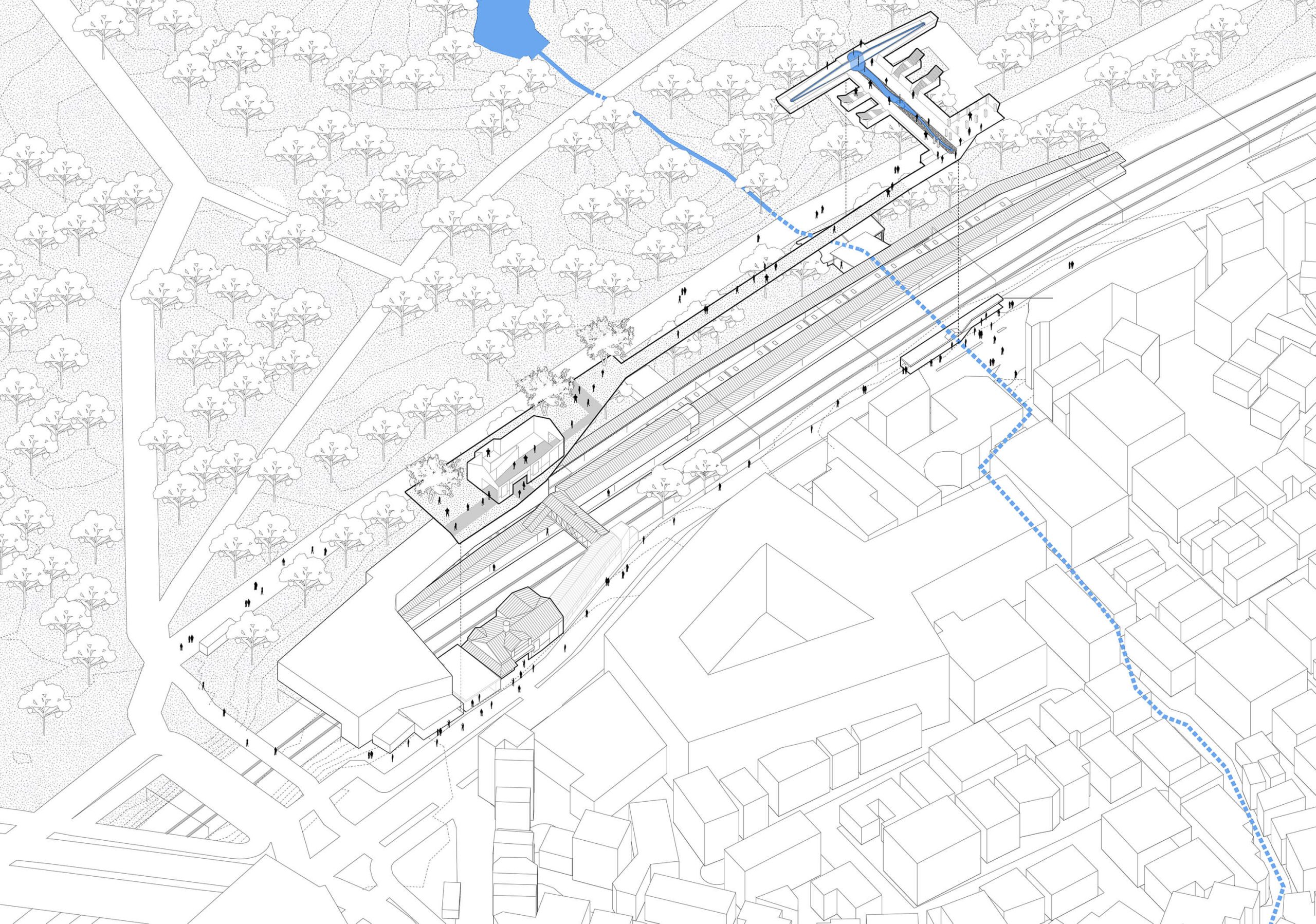
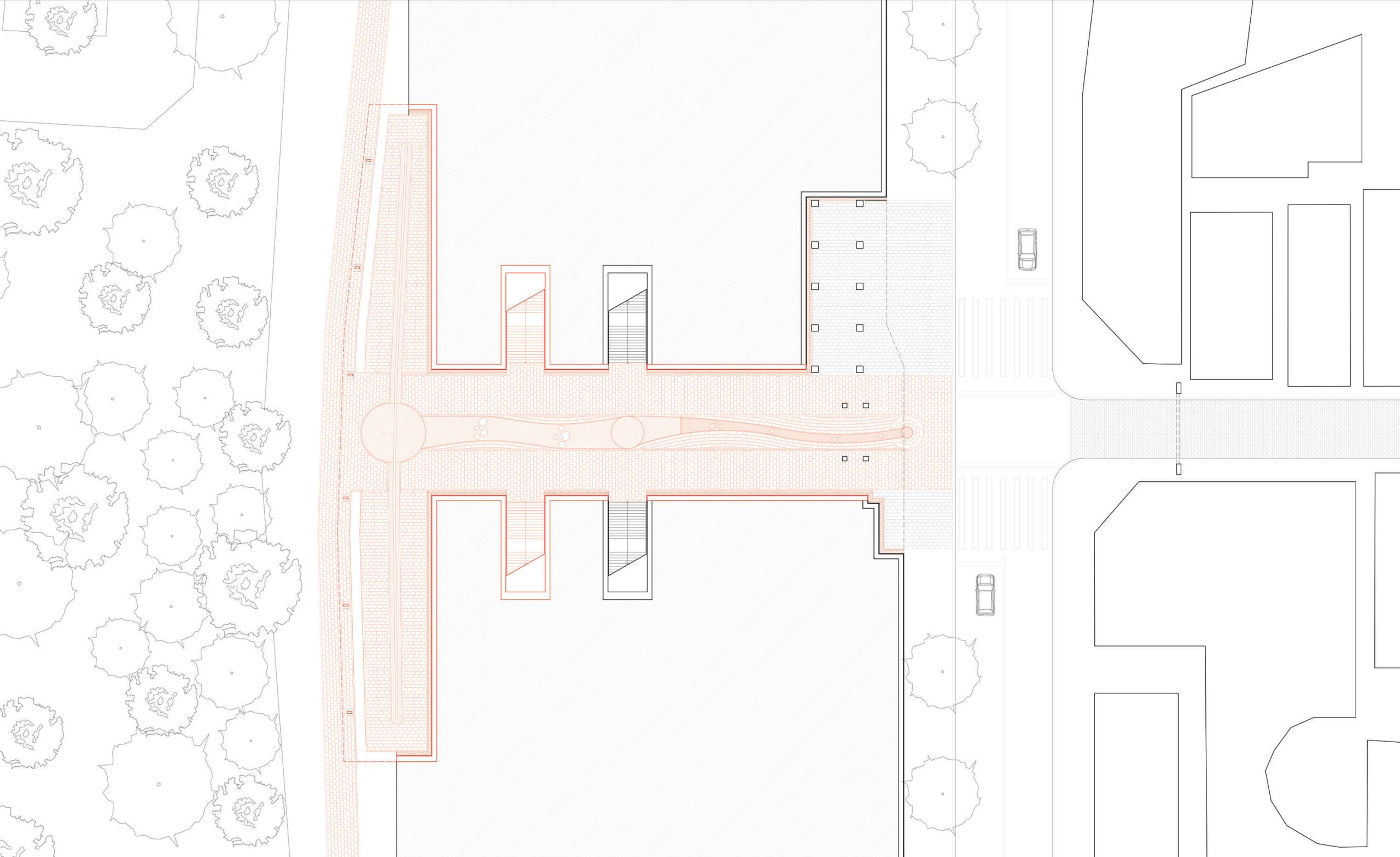

Project
Students
Teacher
Class
Type
Year
Harajuku / A River Flowing Station
Gabrielle DebievreKinlaam TamYosuke Katsuo
Sheila Kennedy
2018_Yamanote-line Lab
–
2018 1Q